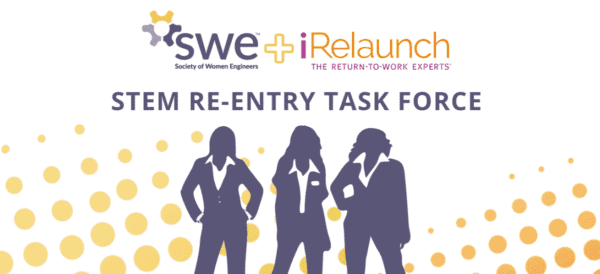The verdict is in: companies with more women in leadership positions perform better. As data from a 2021 Bank of America study show, “S&P 500 companies with above-median gender diversity on their boards see 15% higher return on equity (ROE)” than those with below-median gender diversity.
The implications for women in senior management roles are even greater.
According to BofA, “if a company had more women in management than the median, they saw a 30% higher ROE, as well as a 30% lower earnings risk over the next year, as compared to those with fewer women in management than the median.”
When it comes to utilities, women are still underrepresented, but the industry is far from uniform. The International Energy Agency has collected data from almost 2,500 firms and over 38,000 employees and found that women in senior roles are better represented in the utilities sector at 17.1% than in the energy industry as a whole (which also includes O&G firms, independent power producers, renewables companies, and uranium miners) at 13.9%. However, these figures are skewed downward by the more than 25% of utility firms in the IEA study that showed no evidence of women senior managers.
Size also matters—of the 500 largest public multinational enterprises and their subsidiaries in IEA’s ADIMA database (approximately 1,500 firms), 174 are in the energy composite. Of that group, larger ADIMA firms have a higher share of women in senior management (17.1%) compared with smaller non-ADIMA firms (13.6%). This suggests larger, publicly held businesses are under greater scrutiny with regard to the makeup of their management teams, among other issues.
However, according to IEA, “female representation is lower in more senior management positions relative to less senior management positions. Within the energy sector this is particularly evident for the top posts (e.g. chair of the board, CEO, president), at less than 5%.”
So, while the power industry is clearly improving, it still has much to do from the C-level down to realize diversity goals. Speaking with current and recently retired female utility executives, there is no shortage of anecdotes from the bad old days.
“I was often the only woman in the room for meetings and the caterers would ask me where to put the coffee and other food service questions,” recalls Lisa Gustafson, a recently retired executive who worked at Consumers Energy starting in the early ‘80s and held a variety of roles from HR to operations and regulatory affairs.
When she was pregnant with her son, one male colleague even told her she was setting a bad example for other women by taking an extra two weeks of unpaid maternity leave under the then recently-passed Family and Medical Leave Act. Gustafson took the time she was entitled to.
“Fast forward to today, my son is 27 and the maternity leave policy now is six months, paid.”
Standing on shoulders
Certainly, much has changed in the power industry over the past 30 years, and the industry owes a collective debt of gratitude for the women who persevered to reach the senior roles they now hold. But those women are also quick to acknowledge the help they received along the way.
Monique Wells is Director of Diversity, Equity, and Inclusion at DTE Energy and notes that while we’re beginning to see the impact of focused efforts—for example, in programs aimed at bringing girls into STEM fields—it’s happening “on the backs of trailblazing men and women making pathways in the industry.”
Christine Elder, CEO of consultancy The Elder Group, describes her entry into the utility world as a “typical start” for a woman with a role in HR. Eventually she got into operations and led a $40m business unit for a large commercial contractor.
“I wouldn’t have had that opportunity if I didn’t have operational responsibility. Those roles are not often held by women,” she explains.
Getting the opportunities to work in different parts of the company is critical for women to have a shot at senior management positions or a spot on the board. Elder, Gustafson and Wells each identify this as a must-have. Obviously, getting those opportunities has a lot to do with the managers one works under and the culture the company exhibits.
“It’s hit or miss with utilities and gender diversity,” says Nedra Hurley, Regional Vice President of Sales for ABB’s Electrification business in the US. “Some of the more progressive ones have even come to us asking about diversity in our supply chain because they have a diversity function within their procurement process.”
Hurley has also noticed that utilities with more women in leadership roles tend to have more diverse teams in general, with people of different ages, races, and professional backgrounds collaborating within teams.
What we know works
In speaking about what kinds of initiatives have been proven to bring in and advance women in utility careers, the women interviewed here point to a few items in particular.
- Senior leadership support –
- This is critical, but it’s a starting point, not an end state. “Culture flows from the top,” says ABB’s Hurley. “When you see leaders embodying core values, people follow suit.” When leaders demonstrate bad behaviors, employees tend to emulate those, too.
- Mentoring –
- Another essential tactic, it’s important to get it right. “The value of mentorship is not always taken seriously enough,” notes Gustafson. “It’s more than just meeting with someone and listening, but the reality is some mentors are just a sounding board.”
- Outreach –
- This extends beyond the company itself to educational institutions. “Academia needs a concentrated focus on women and their advancement in and through technical programs, university, and apprenticeship/skilled trade programs,” says DTE’s Wells. “When companies reach out to all kinds of schools and are focused on building relationships, it works.”
- Cross-functional opportunities –
- Elder, Gustafson and Wells all cited the chance to work in multiple roles as key to preparing for taking leadership positions. “Creating opportunities for lateral moves, learning different parts of the company—this is giving women true, meaningful experiences to they’re ready to take on the next role,” say Elder. “It applies to men, too.”
- Support from men in the organization –
- Given that the power industry is still overwhelmingly male, this is still important. ABB’s Hurley notes that a CTO at a major utility she knew once observed that most women in senior STEM roles had an early male role model or mentor. “That person taught them about the technical subject matter and allowed them to become comfortable with it.”
One other subject that came up again and again in discussions for this story was the importance of building relationships—with senior leaders, with other women, and as noted above, with men in the organization who can help prepare women for leadership.
DTE’s Wells notes that relationships count for a lot at any time in a woman’s career. She recalls her own experience being recruited by Dow out of college, noting “They were so intentional about making me a part of their visit to the school. They had opportunities for me in summer internships. They nurtured the relationship so that by the time I was looking for a full-time job, there was no question I was going to Dow. They’d invested so much in me.”
Pitfalls
Probably the greatest threat to women advancing in leadership roles in the power industry is an unsupportive culture that is usually indicative of a lack of executive sponsorship—or worse. It can be extremely damaging for an initiative to promote women to be undermined or simply ignored by those in power, whether male or female.
“The people in the company are the ones who are going to make [promoting women] real,” says Wells, “so everybody needs to be bought in.”
Gustafson is more direct.
“If you don’t walk the talk, if you don’t deal appropriately with leaders who don’t support the culture needed, then DE&I strategy isn’t going to be very impactful,” she says.
The consequences of an indifferent or dismissive leadership can be dire, especially in the current labor market where employees have options.
“Where you see traditional leadership that doesn’t promote inclusivity, you start to see talent leave because they can’t be themselves,” says Hurley. Perhaps for that reason alone, given the realities of the current labor market, having a corporate culture that values difference in general and supports women in particular is a strategic advantage.
As the utility industry undergoes its most dramatic changes since its inception, it seems not only appropriate but vital that utilities should work to attract and retain more female talent. Not doing so could be detrimental to the company’s performance while firms that go all-in on women will be well positioned to manage the transformation of the power industry.







